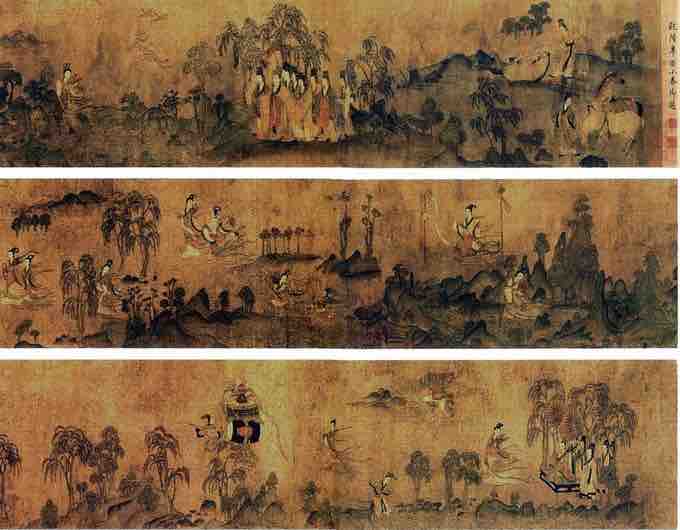Painting in the Six Dynasties Period
The Six Dynasties period (220–589 CE) takes its name from the six ruling dynasties of the era: the Eastern Wu Dynasty (222–280), Jin Dynasty (265–420), Liu Song Dynasty (420–479), Southern Qi Dynasty (479–502), Liang Dynasty (502–557), and Chen Dynasty (557–589). During the Six Dynasties period, people began to write about art and appreciate painting for its own beauty. From this time, individual artists began to rise to attention, such as Gu Kaizhi. Many of these artists illustrated Confucian moral themes—such as the preferred behavior of a wife to her husband or of children to their parents—while making the figures graceful and artistic.

Luoshenfu, Gu Kaizhi (344-406 CE)
The painting Luoshenfu by artist Gu Kaizhi, painted during the Six Dynasties Period.
The Six Principles
Xie He—a writer, art historian, and critic in 5th century China—is most famous for outlining six points to consider when judging a painting. These points were taken from the preface to his book, The Record of the Classification of Old Painters, written c. 550 CE and referring to "old" practices. According to him, the six elements that define a painting are:
- Spirit Resonance, or vitality, which refers to the flow of energy that encompasses theme, work, and artist. Xie He said that without Spirit Resonance, there was no need to look further.
- Bone Method, or the way of using the brush, which refers not only to texture and brush strokes, but also to the close link between handwriting and personality. In his day, the art of calligraphy was inseparable from painting.
- Correspondence to the Object, or the depicting of form, which includes shapes and lines.
- Suitability to Type, or the application of color, which includes layers, value, and tone.
- Division and Planning, or placing and arrangement, which corresponds to composition, space, and depth.
- Transmission by Copying, or the copying of models, which means not only from life but also from the works of antiquity.
Tomb mural
Murals from a tomb of the Six Dynasties period (550-577 CE) in Jiuyuangang, Xinzhou, showing a rural hunting scene on horseback